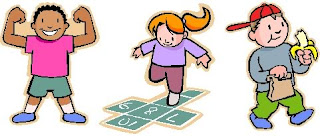Here are 5 ideas you can use at home to encourage healthy eating for kids. These days I am surprised when my son brings home his lunch kit; this tells me that he is most likely enjoys healthy eating. The water bottle is empty. there is no half eaten apple, or food left in his lunch kit. I am also more surprised when he would calmly watch other kids eat their corn curls snacks, etc. in front of him and he would not even throw a fit if he is not given one as well. He eats vegetables with much gusto, even those vegetables that kids would not touch such as broccoli and carrots. But things were not always like this.

Teaching Kids about Healthy Eating
It is not easy teaching kids healthy eating, especially when all others around them eat differently. Kids would eat mostly a lot of unhealthy snacks if left alone to choose. The kids with allergies and the strict diets are most affected. But teaching children healthy eating is important, especially in our modern times were fast food is so common, accessible, and cheap. Even the school feeding programs is of no help in producing health conscious children.
Teaching children healthy eating is important. Today, many studies show that half of today’s school kids eat unhealthy: they dine on fast-food and snacks as part of or their lunch meal. Also more and more children are becoming obese and have related health problems, such as heart-disease, diabetes and hypertension. Most of these children who are overweight during childhood become overweight adults through years of continued bad habits. Health problems for adults also burden the health system and makes health care in hospitals more expensive.
 Encouraging healthy eating among children would require a bit of creativity. You cannot simply force a child to eat healthy, but you can act as their gatekeeper in determining what foods they should eat and at the same time honor their preferences.
Encouraging healthy eating among children would require a bit of creativity. You cannot simply force a child to eat healthy, but you can act as their gatekeeper in determining what foods they should eat and at the same time honor their preferences.
Healthy Eating for Kids – Tips to Teach Them
Here are some pointers as to how you can do this:
1. Introduce them gradually to healthy foods.
You can help them understand the importance of fruits and vegetables by allowing to to get involved in a number of activities. You can give them pictures of healthy fruits and vegetables to colour and play games with them, such as name that fruit.
2. Sneak the healthy food in their lunch kits.
However, they may easily pick up a chocolate bar over an apple even after all those activities. So if you cannot get them to eat the bananas or apples, you can remove that pack of corn curls or chocolate bar from their lunch kit and replace it with a banana or apple.
3. Call fruits and vegetables by funny names.
Most kids would find it enjoyable to call their broccoli “little trees”. They would enjoy pretending to be giants eating these “little trees”.
4. Make the foods taste better and look great.
There are many tasty ways to prepare your fruits and vegetables. Combination of vegetables or fruits are attractive and tasty. They can also be served separately. The foods should be mild because children have more taste buds. Vegetables can be stir fried, prepared as a tasty salad and tossed with some nuts or a cheese or dressing. You can also create funny faces with the food on the plate, or serve them in geometric shapes.
5. Allow children to participate in meal plans.
This is another opportunity to provide a fun experience for children to learn abut preparing healthy meals. They also learn to about colours, shapes and textures.
It takes a lot of effort to get kids eating healthy, but it can be fun. The payoff for the kids in the end is great. Studies show that children who develop a healthy eating routine are more focused, have better temperament, and a stronger immune system. They recover from illness faster as well. Children who have immune problems and developmental problems show greater strides when they eat more fruits and vegetables. Ensure that the foods they eat are organic and contains no preservatives or additives. You will soon see the payoffs of healthy eating in their daily activities.
Related Article:

